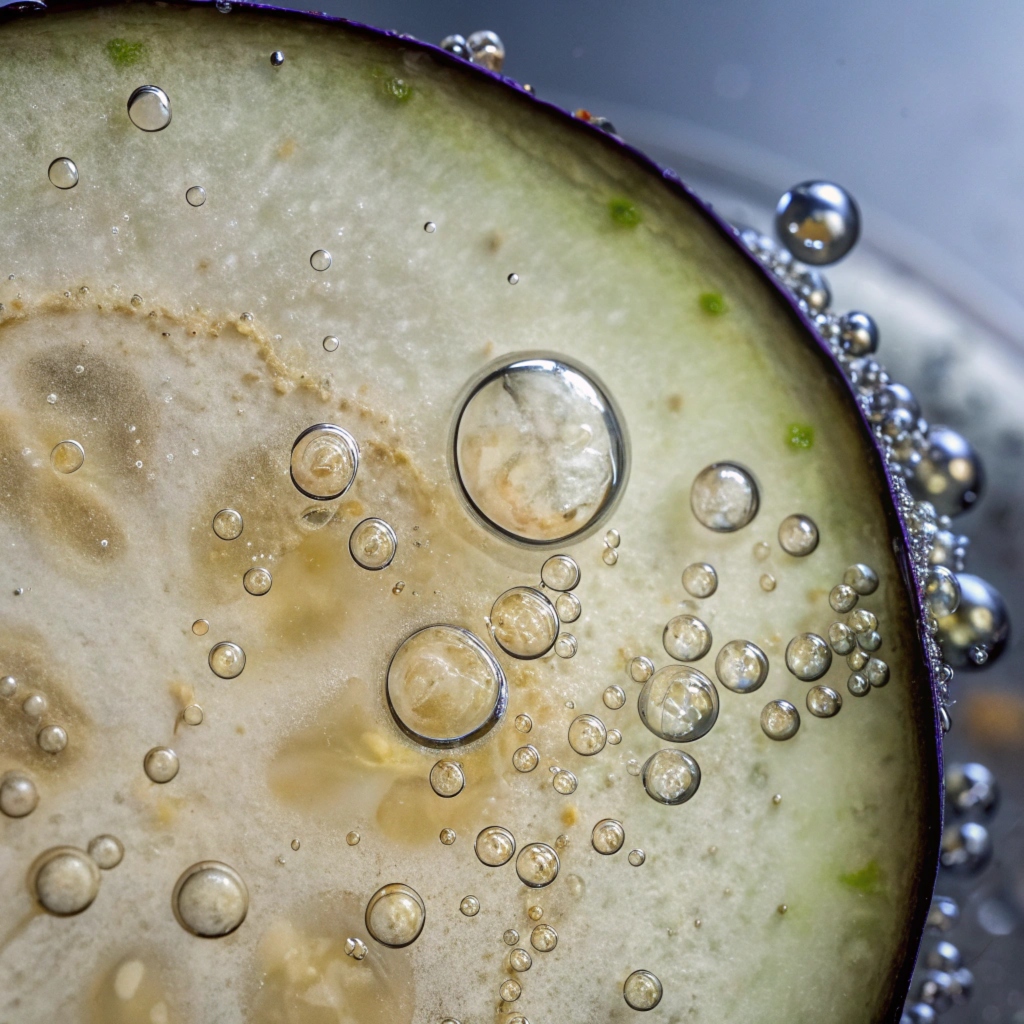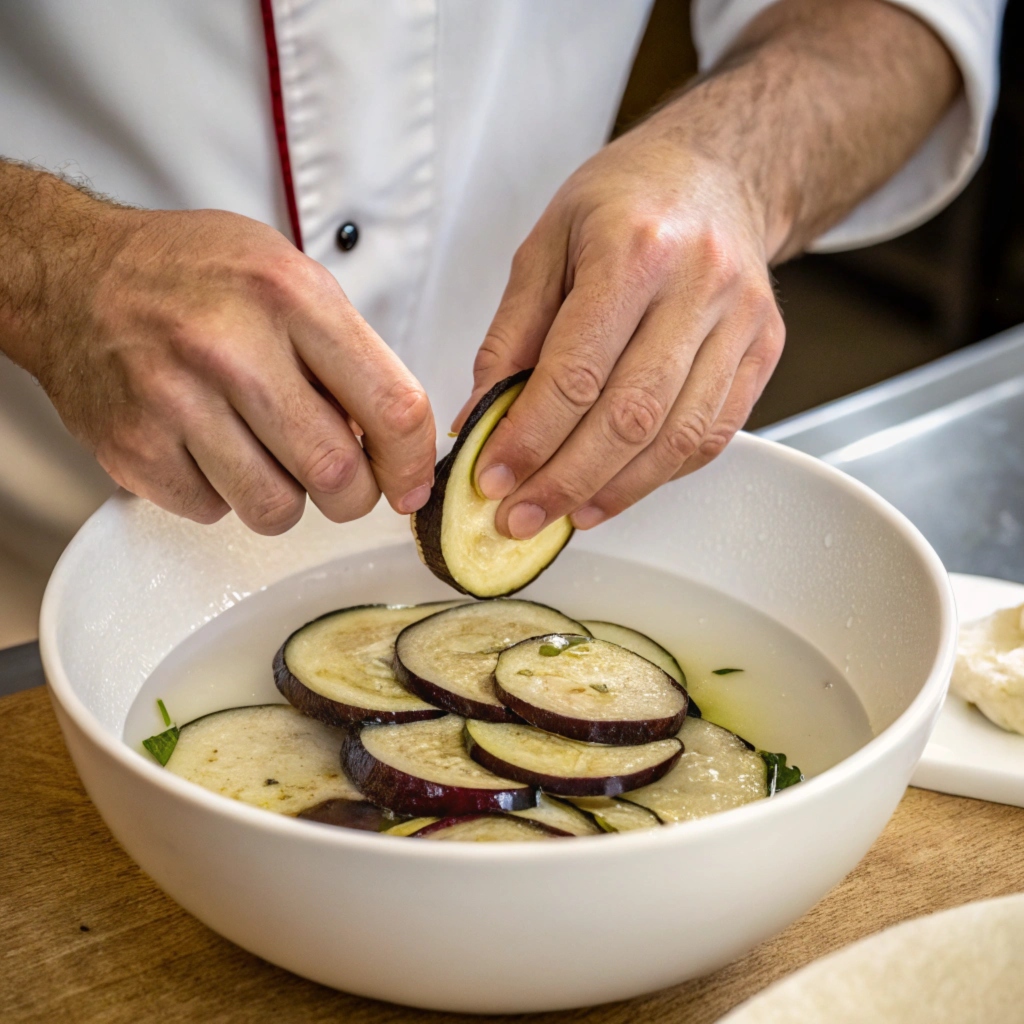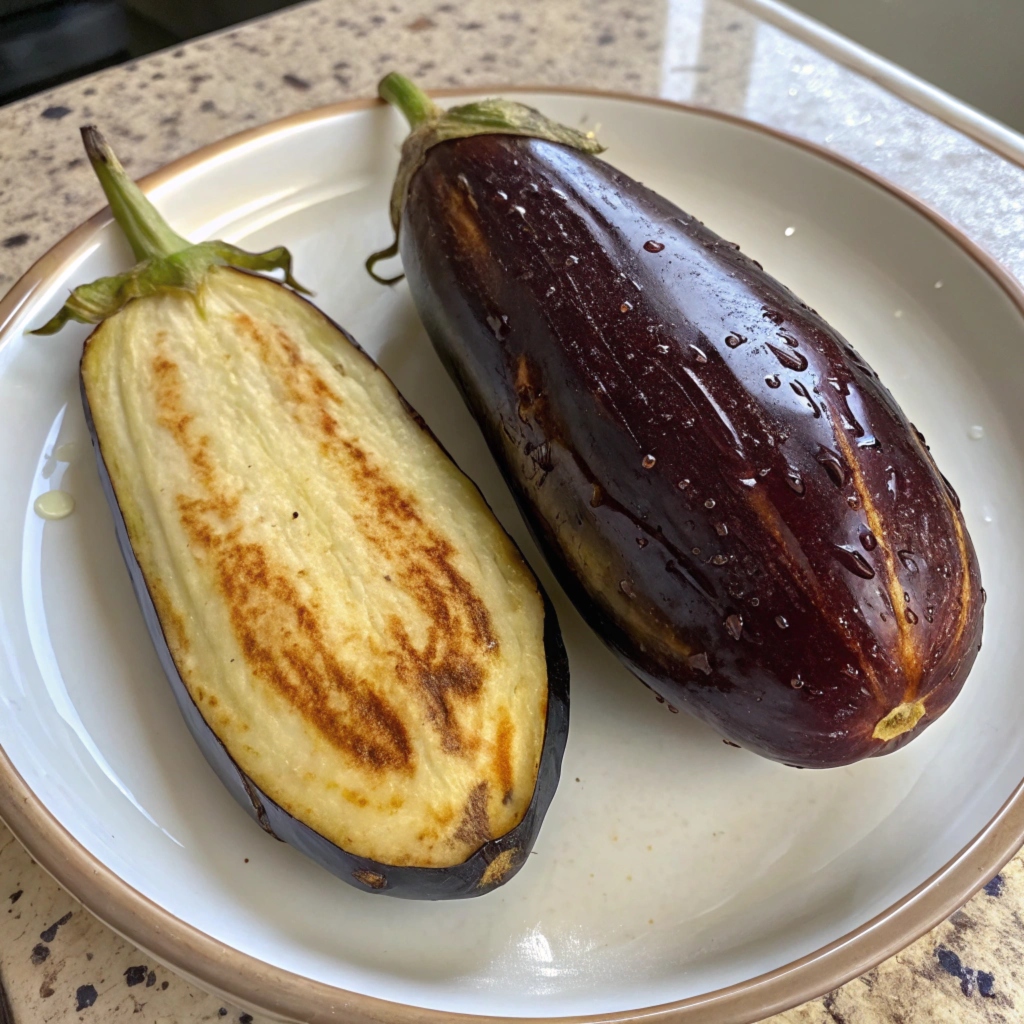Have you ever wondered why some recipes tell you to soak eggplant in water before cooking? At first glance, it might seem unnecessary—after all, how complicated could prepping a vegetable be? But when it comes to eggplant, a little extra effort goes a long way. Whether you’re roasting, frying, or grilling, soaking eggplant in water can transform it from an oily, bitter mess to a soft, flavorful delight.
Eggplant, or aubergine, is a culinary chameleon that fits beautifully into countless dishes. However, it has its quirks, and prepping it correctly is the key to making it the star of your meal. Let’s dive into the nitty-gritty and learn why soaking is a game-changer.
Table of contents
Understanding Eggplant: A Versatile Vegetable
Eggplant isn’t just another vegetable; it’s a culinary powerhouse. From Mediterranean classics like moussaka to smoky baba ganoush and hearty ratatouille, eggplant takes center stage in a variety of global cuisines. Its spongy texture and ability to absorb flavors make it unique.
Nutritional Benefits of Eggplant
Eggplants are low in calories but rich in nutrients, making them a great choice for healthy meals
eggplants:
- Fiber: Helps with digestion and keeps you feeling full longer.
- Vitamins: A good source of vitamin C, K, and several B vitamins.
- Antioxidants: Contains nasunin, an antioxidant that protects your brain cells.
- Low Calories: Perfect for those watching their weight without compromising flavor.
Common Cooking Challenges with Eggplant
While eggplant can elevate your dish, it often comes with some challenges. If you’ve ever tried cooking it without preparation, you’ve probably faced one of these issues:
- Bitterness: Older or improperly prepared eggplants can have an unpleasant bitter taste.
- Oil Absorption: Eggplant’s spongy texture soaks up oil like a thirsty sponge, leading to greasy dishes.
- Rubbery Texture: If cooked poorly, eggplant can end up chewy instead of tender.
These problems can be frustrating, but that’s where soaking comes in to save the day!

The Science Behind Soaking Eggplant in Water
So, what’s the deal with soaking eggplant? The answer lies in a little science.
Why Eggplants Absorb Oil Quickly During Cooking
Eggplants are like sponges because of their porous structure. When you toss them directly into a frying pan, their cells act like tiny oil vacuums, soaking up more fat than you probably intended. Soaking them in water before cooking helps saturate their cells, reducing their ability to absorb oil. It’s a bit like pre-loading a sponge with water before adding soap—it doesn’t take in as much.
“Soaking eggplant isn’t just a kitchen hack; it’s science at work. By filling the air pockets in the vegetable with water, you prevent oil from taking over!”
The Role of Osmosis in Eggplant Preparation
Remember osmosis from your high school science class? It’s the process where water moves through a semi-permeable membrane from a less concentrated solution to a more concentrated one. When you soak eggplant in salted water, osmosis draws out bitter compounds (like solanine) from the flesh. The result? A sweeter, more pleasant-tasting vegetable.
Step-by-Step Guide: How to Soak Eggplant Properly
Soaking eggplant isn’t complicated, but doing it right can make all the difference. Here’s how:
What You Need to Soak Eggplant
- Fresh eggplant (cut into slices or cubes)
- A large bowl
- Cold water
- Salt (about 1-2 tablespoons per quart of water)
How Long Should You Soak Eggplant?
The soaking time depends on your recipe, but 15-30 minutes is usually enough. For particularly bitter eggplants or large pieces, you can go up to an hour. Don’t forget to rinse them afterward to remove excess salt!
Tips for Maximizing the Effectiveness of Soaking
- Use a heavy plate to keep the eggplant submerged. Floating pieces won’t benefit from the process.
- Rinse and pat dry with a paper towel before cooking to avoid excess moisture.
- If you’re short on time, even a quick 10-minute soak can reduce bitterness.
“Quick tip: Always taste your eggplant after soaking to check for residual salt. A quick rinse and pat dry will ensure your dish isn’t overly salty.”
Benefits of Soaking Eggplant in Water
Now that we’ve covered the basics, let’s dive into why soaking eggplant in water is such a game-changer. This simple step can elevate your cooking by improving flavor, texture, and even the healthiness of your dish.
Reducing Bitterness for a Sweeter Taste
One of the most common complaints about eggplant is its bitter flavor, especially in older or larger vegetables. This bitterness comes from natural compounds called alkaloids. Soaking eggplant in salted water helps to draw out these compounds, leaving behind a sweeter, more balanced taste.
“Think of soaking as a detox for your eggplant—it’s like giving it a fresh start before cooking!”
Preventing Excess Oil Absorption for Healthier Dishes
Eggplant’s spongy texture is both a blessing and a curse. While it absorbs flavors beautifully, it can also soak up a shocking amount of oil during cooking. Soaking the slices in water helps to fill the eggplant’s porous cells, making it less absorbent. The result? A healthier, less greasy dish that still tastes amazing.
Improving Texture and Flavor in Recipes
Eggplant that hasn’t been soaked can sometimes end up rubbery or tough after cooking. Soaking softens the vegetable, resulting in a creamy, melt-in-your-mouth texture. It also allows the eggplant to cook more evenly, ensuring every bite is perfectly tender.

Alternative Methods to Prepare Eggplant
If you’re not a fan of soaking or don’t have the time, don’t worry—there are other ways to prep eggplant for cooking. Each method has its pros and cons, so feel free to experiment and find what works best for your dish.
Using Salt for Moisture Extraction
Sprinkling eggplant slices with salt and letting them sit is another effective way to draw out bitterness and moisture. Here’s how:
- Slice the eggplant and lay the pieces on a baking sheet.
- Sprinkle each piece generously with salt.
- Let them sit for 20-30 minutes until droplets of moisture appear.
- Rinse off the salt and pat dry before cooking.
This method skips the water but achieves similar results in terms of flavor improvement.
Drying and Roasting Eggplant Without Soaking
For recipes that require roasted eggplant, you can skip soaking altogether by focusing on proper drying techniques. Here’s how to do it:
- Cut the eggplant into your desired shape.
- Lay the pieces on a paper towel and pat them dry.
- Lightly coat with olive oil and roast at a high temperature (around 400°F/200°C).
Roasting without soaking gives you a slightly firmer texture, which works well for salads or side dishes.
Common Mistakes When Preparing Eggplant
Even with the best intentions, it’s easy to make mistakes when preparing eggplant. Let’s look at a few common pitfalls and how to avoid them.
Over-Soaking: When Good Intentions Go Too Far
While soaking is beneficial, leaving eggplant in water for too long can lead to mushy, waterlogged pieces that lose their structure during cooking. Stick to the recommended soaking times (15-30 minutes) to avoid this issue.
Neglecting to Rinse or Dry the Eggplant After Soaking
Failing to rinse off excess salt after soaking can leave your dish overly salty. Similarly, cooking wet eggplant can result in steaming rather than frying or roasting, leading to soggy textures. Always rinse and pat dry before proceeding.
“Pro tip: A quick pat dry can make or break your dish—don’t skip this step if you want that perfect, crispy exterior!”

Frequently Asked Questions About Soaking Eggplant
Even after learning the basics, you might still have some lingering questions. Let’s address a few of the most common ones.
Do All Varieties of Eggplant Require Soaking?
Not necessarily! Smaller, younger eggplants (like Japanese or baby eggplants) are naturally sweeter and less bitter. These varieties often don’t need soaking and can go straight into your recipe.
Can You Skip Soaking and Still Get Good Results?
Yes, but it depends on the dish. For frying or grilling, soaking helps reduce oil absorption and enhances texture. For roasting, you can often skip soaking if you prefer a firmer bite.
What Happens If You Don’t Soak Eggplant?
Skipping the soak can result in bitter flavors, excessive oil absorption, and uneven cooking. While it’s not always a deal-breaker, soaking ensures the best results, especially for fried dishes.
More Ideas for Eggplant Preparation
Eggplant is incredibly versatile and can be paired with various cooking techniques and cuisines. If you’re looking to expand your culinary repertoire, here are some creative ideas and tips for incorporating eggplant into your meals.
Experiment with Global Cuisines
Eggplant’s ability to absorb flavors makes it an ideal ingredient for international recipes. Here are a few ideas:
- Mediterranean-Inspired Eggplant: Roast slices and top with tahini, pomegranate seeds, and a drizzle of olive oil. It’s a quick and healthy side dish.
- Asian-Style Stir-Fried Eggplant: Toss sliced eggplant with soy sauce, garlic, ginger, and sesame oil for a flavorful stir-fry.
- Eggplant Parmesan with a Twist: Try grilling the eggplant instead of frying to cut down on calories while keeping the dish delicious.
For inspiration, check out the Easy Blackstone Recipes that are full of fun, flavorful ideas perfect for eggplant!
Pair Eggplant with Seasonal Ingredients
Eggplant pairs beautifully with seasonal produce. Combine it with summer tomatoes, zucchini, and bell peppers for a hearty ratatouille. Or, for a winter twist, roast eggplant alongside root vegetables and drizzle with balsamic glaze.
For a perfect dinner pairing, consider what complements the dish, such as in What Goes With Pastalaya for Dinner.
Transform Eggplant into Dips and Spreads
Eggplant’s creamy texture makes it ideal for dips. Classic baba ganoush is always a hit, but you can also experiment with smoky roasted eggplant blended with yogurt, garlic, and herbs for a refreshing dip. Serve with crusty bread or fresh veggies.
If you enjoy creamy dishes, you might find inspiration from The Secret to Perfect Crème Brûlée, where technique and texture are key.
Use Eggplant in One-Pan Meals
Eggplant works wonderfully in one-skillet dishes. Combine it with ground chicken, pasta, and cheese for a quick weeknight meal. This approach minimizes cleanup and maximizes flavor. You might enjoy exploring similar concepts, like in One-Skillet Cheesy Ground Chicken Pasta.
Conclusion: Unlocking the Best in Your Eggplant Dishes
Eggplant is an incredibly versatile vegetable that shines when prepared correctly. By soaking it in water before cooking, you can reduce bitterness, prevent oil overload, and improve its texture—all of which contribute to a more enjoyable dining experience. This simple yet effective step transforms eggplant into a culinary superstar, making it the perfect base for everything from rich casseroles to delicate grilled dishes.
Why Soaking Is Worth It
Taking the time to soak your eggplant is a small investment with big payoffs. It not only makes cooking easier but also enhances the flavor and healthiness of your meals. Whether you’re whipping up a classic eggplant Parmesan or experimenting with a new recipe, this step ensures you’re starting with the best possible foundation.
“When you take a little extra time to prep your eggplant, the results speak for themselves—sweeter flavors, better textures, and healthier meals!”
Final Tips for Perfect Eggplant Every Time
- Choose the Right Eggplant: Look for firm, shiny eggplants with no soft spots. Smaller varieties tend to be sweeter and less bitter.
- Experiment with Methods: Soaking is great, but don’t shy away from trying other preparation techniques like salting or roasting.
- Pair with Bold Flavors: Eggplant pairs beautifully with garlic, herbs, and spices. Don’t be afraid to get creative!
By understanding the science and techniques behind soaking, you’ll never look at eggplant the same way again. Instead of being intimidated by its quirks, you’ll have the tools to make it shine in every dish.
Recap: Why Do You Soak Eggplant in Water Before Cooking?
- To reduce bitterness and make it taste sweeter.
- To prevent excessive oil absorption during frying or sautéing.
- To improve texture, creating a softer and more evenly cooked result.
So next time you’re cooking with eggplant, don’t skip this essential step. Whether you’re a seasoned chef or a kitchen novice, soaking your eggplant is a foolproof way to elevate your cooking.
“Eggplant isn’t just a vegetable; it’s an opportunity to create something extraordinary. Treat it right, and it will reward you with flavor and versatility!”
Final Thoughts
Eggplant preparation might seem a bit daunting at first, but it’s all about finding the right balance. With techniques like soaking, salting, or even roasting, you can tailor the process to suit your recipe and preferences. Remember, every great dish starts with thoughtful preparation—and now you’re equipped to make eggplant the star of your kitchen.
Ready to try your hand at soaking and cooking eggplant? Let the kitchen experiments begin! And don’t forget to share your favorite eggplant recipes with friends and family—they’ll thank you for it.
